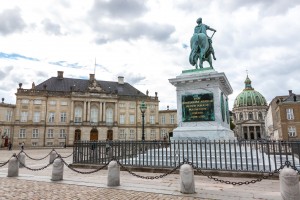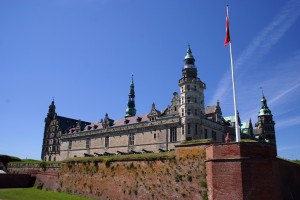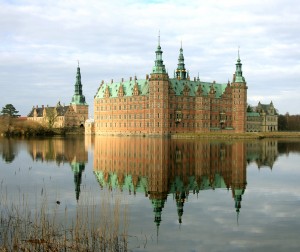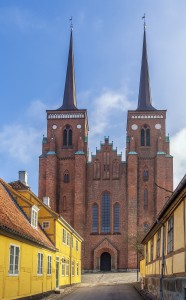
Copenhagen & Zealand
Copenhagen
Copenhagen is nestled on the east coast of Zealand, Denmark, and is consistently nominated as best city in the world for livability and sustainability. A must-see of the Nordic region, Copenhagen is seriously cool. With trendy bar, fashion and design scenes, Denmark’s draw cards also extend to its culinary scene. Noma was voted the world’s best restaurant in 2014 and sits among 14 other Michelin-Stared restaurants in town. The warmest months are July and August, in the middle of the European Summer. Being much further north than many other popular European destinations, the summer months are a little more bearable, enjoying temperatures of around 20C with long, bright sunny days.
Copenhagen is the first carbon neutral capital in the world and has over 400kms of interconnecting bike paths. If you’re not all that comfortable on two wheels, most of the attractions are close to each other, making it a perfect walking city.
Spend a day in Tivoli Gardens, an amusement park that boasts exotic architecture, historic buildings and beautiful gardens. The rides are all designed to match the surroundings, and you can ride a (renovated) 100 year old roller-coaster. Tivoli is a tasteful take on the amusement park and a beautiful place to enjoy a picnic or open air concert, especially after dark when coloured lights light up the nights. Tivoli is open in summer, and intermittently around Halloween, November and Christmas.
Stroll to Langelinie Pier to see one of the most famous sites of Copenhagen – the Little Mermaid, a bronze and granite statue inspired by Hans Christian Andersen’s fairy tale. A gift to the city, she celebrated her 100th birthday in 2013. Andersen wrote several of his famous fairy tales in Nyhavn, a busy commercial port about 20 minutes away. You will recognise this area from many photos of brightly coloured, terraced town houses and beautiful Scandinavian wooden boats. The area is now the city’s entertainment district, stretching from Kings Square to the harbour just south of the Royal Playhouse.
Do your shopping on the street of Stroget, where top-quality fashion shops are nestled within Denmark’s world-famous architecture. Head along to the Torvehallerne to discover local foods, chocolate, wine and spirits.
Head to Christiania to experience Copenhagen’s hippie culture, a fascinating mix of homemade houses, workshops, art galleries, music venues and cheap, organic eateries. Beware that there is a strict code of conduct within the community that must be adhered to and, while it is generally a safe and wholesome community, there are some darker activities that go on. We suggest seeing Christiania as a part of a guided tour.
Amalienborg Palace is the grand home of the Danish Royal Family. Experience royal life on a guided tour, or witness the changing of the guard’s everyday at 12 noon. Learn about Denmark’s history at one of Copenhagen’s many museums, such as the Nationalmuseet.
North Zealand
The rest of North Zealand is ideal for the nature enthusiast. A popular holiday destination for Europeans, North Zealand is home to deep woodlands, open landscapes, stunning coastlines and many castles to explore.
North Zealand is sometimes referred to as the Danish Riviera, and you can see why with a scenic drive along the Øresund Coast. You will pass through small fishing villages and old towns and, on a clear day, you can see right across to Sweden. The coast is also dotted with calm, beautiful beaches along the way to some amazing holiday destinations. Follow the Hesselø Bugt coast to Hornbæk, Gilleleje, Rågeleje, Tisvilde and Liseleje, which have made the transition from sleepy seaside fishing villages to exclusive holiday destinations. Gilleleje still has a functioning fishing harbour and played a large part in helping escaping Jews in WWII. The home of polar explorer Knud Rasmussen is in Skansen and the thatched cottages of Kikhavn, one of the regions oldest fishing villages, are nationally protected. Many of these towns are only short distances from each and easily driveable.
The Louisiana Museum of Modern Art is in Humlebæk the North Zealand cost, looking over Sweden and houses amazing modern art by the likes of Francis Bacon, Dubuffet, Picasso, Henry Moore and Andy Warhol. The museum plays very well on the interconnectedness of art, architecture and landscape. While here, visit nearby Nivaagaard painting collection, which houses older works of art.
If you fancy yourself to be a little of a literary buff, you must visit Helsingør. Gatekeeper to the Baltic Sea, Helsingør was made famous as the location of ‘Elsinore’, the home of Shakespeare’s Hamlet. The real name of the UNESCO World Heritage Listed Castle is Kronborg Castle, and you can learn all about the history on one of the guided tours – free once you have paid the admission fee to the castle itself. The surrounding city is steeped in history and it is well worth a visit to the cathedral and monastery.
A brand new Maritime Museum opened here in 2013, fascinating in part due to the architecture of Bjarke Ingels. The museum sits underground and is marked by a building in the shape of a sunken ship.
The Danish Royal Family resides in Fredensborg Castle in the spring and autumn months, and you can stroll one of the many paths through the castle park, offering great views of Esrum Lake. Esrum Abbey hosts great exhibitions and a medieval market every June. The Danish Natural History museum is located in the Fredriksborg Castle in Hillerød, which also houses an impressive portrait gallery. Jægerspris Castle and Selsø Castles are also impressive sites in the region.
Frederikssund sits on the Roskilde Fjord, home to a reconstructed Viking village and regular Viking plays. For something a little slower, head to the museum of painter J.F Wilumsen, known for his expressions of symbolism and expressionism. A little further north, Frederiksværk is an old industrial town based in an old canon and gun powder factory in the same area, worth a look for the reconstructed Viking village and Viking plays.
West Zealand
West Zealand is all about Viking history, art, small market towns and quiet harbours, set against a beautiful backdrop of fjords, beaches, cliffs and rolling hills. Take West Zealand at a calm and relaxed pace.
Experience 1000 years of history at the Viking Ship Museum in Roskilde, nestled amongst an impressive cathedral city which dates back to Viking times. The Roskilde Cathedral is the burial place of nearly 40 rulers of Denmark – and the first gothic brick cathedral on the UNESCO World Heritage List. Once you have learned a thing or two from the museum, head into the hilly landscape to explore ancient burial grounds. Walk around a well-preserved ring fortress and museum around Isefjorden, and visit a unique Bronze-Age sun chariot, unearthed around Trundholm Moore.
The Odsherred Peninsula has attracted many artists over the years, and there are many museums and galleries that showcase the work from these artists. The Annenburg Collections is Northern Europe’s largest glass collections located high above Isefjorden. Visit the art museum in Sorø for an incredible selection of Danish art dating back to the 1700’s, and also home to a beautiful abbey church, resting place for many nobles including Bishop Absalon, Copenhagen’s founder.
Other things to do in West Zealand include visiting the smokehouse at Havneby, follow the footsteps of Hans Christian Andersen to Skælskør, or catch the ferry over the popular small holiday town of Hundested. Explore the Vor Frue (five towered church) in Samsø, or enjoy the scenic walks and amazing food in the old ferry town of Korsør.
South Zealand
South Zealand has open green landscapes, beautiful beaches and the highest cliffs in the country bordering the Baltic Sea, making it a great place to hike. The islands of South Zealand; Falster, Lolland and Møn, are popular holiday spots and connected to the mainland by bridges. Here you will find laid-back living and beautiful beaches. South Zealand boasts attractions such as castles, flower gardens, ancient churches, wildlife parks and amusements.
On the east coast not far from Copenhagen sits Køge, a wonderfully preserved medieval town with brightly coloured houses. From here head south-west to Næstved. The impressive Gisselfeld Castle and Bregentved Estate make for good pit stops on the way. The city of Næstved has been an important trade town since medieval times due to its location on the River Suså. There are old churches, streets and houses, and the old monastery has been converted into Denmark’s most prestigious boarding school. Just south of Næstved is Gavnø Castle, to see its beautiful flower garden and museums. BonBon-Land is an amusement park that has landed in lists of the greatest amusement parks… as well as the most bizarre. It has been described as ‘whimsical, wacky and vaguely disturbing’ and – while the whole thing centres on toilet humour – oddly enough, a lot of fun.
Head South from here over the bridge to Møn, where the church frescos date back to the 15th Century. Touted as the most magical of the South Islands, it is surrounded in spectacular towering white cliffs, named Møns Klint – one of the most visited attractions of South Zealand. There is a healthy culture of arts on this island, and it is perhaps the best place to pick up ceramics, as the rich soil clay draws potters to the area.
Getting around Møn is by bicycle, bus or car. The main town, Stege, has one single main street boasting good cafes, a tourism office, independent shops and a microbrewery. Stege’s Old Town houses The Mill Gate and several extremely old houses. The ‘Stege Festival’ takes place from July to the beginning of August on Tuesdays.
Klintholm Havn, a beautiful long beach, awakens only in the summer, when it becomes a popular drawcard for tourists and locals alike. Take a two-hour boat trip from here to get a unique view of the white cliffs. Møn is also home to the romantic Liselund Castle and its large park, open to the public and a beautiful place to enjoy some lunch.
Heading west from Møn, drive through the beautiful island scenery of Bogø and onto Falster. Nykøbing is the only large city on Falster, with houses and a monastery dating back to the 17th century. The town has a medieval centre called Middelaldercentret where you can have a lot of fun experiencing what life was like in 14th century Denmark. Falster is also home to the Guldborgsund Zoo and Botanical Gardens, where you can visit the prehistoric garden, explore the rainforest with monkeys leaping past you, say hello to a Siberian Tiger and picnic next to the lake.
Lolland is the southernmost island of Denmark, connected to Germany by tunnel. Lolland is a great place to take kids, as it boasts the Knuthenborg Safari Park, a crocodile zoo, golf and paintball, and a medieval centre where kids and adults of all ages can gain some insight into life in the middle ages, with the Stone Catapult being fired everyday at 12nooon, sword fights and jousting. Lalandia in Rødby is also a highlight for the young (at heart) with an Aquadome, ski slope, ice rink, bowling alley and more. Catch frequent ferry connections to Germany from Rødbyhavn.
The pleasant cathedral town of Maribo is surrounded by lakes and characteristically-yellow houses line old streets. Denmark’s most famous woman, Leonora Christina, died in the cathedral here in 1698. Visit the Museum Lolland-Falster, an open-air museum containing 16 buildings that showcase the way of living in Lolland and Falster from the sixteenth century to the First World War. There are frequent ferry connections to Germany from Gedser, at Falsters southernmost tip.
For art lovers, the Fuglsang Kunstmuseum pays special attention to art from the period 1780-1960. Wander amongst sculptures, paintings and artworks and take in any special exhibitions that are going on.
Other territories of Denmark include the regions of Jutland, Funen and Bornholm, all of which are equally wonderful to explore.




